Could empty office blocks and shopping centres provide much-needed space for growing companies?
The lack of laboratory infrastructure in the UK is an issue that has persisted for decades. Innovations from deep tech chemistry startups have the potential to transform our lives for the better, but without access to suitable laboratory facilities to enable research and scale-up, progress is being stifled.
The shift towards home-based working following the Covid-19 pandemic, and the simultaneous decline of high street shopping presents a unique opportunity to develop more urban labs, located in the very heart of cities.

‘It’s a combination of factors – right time, right place,’ says Glenn Crocker, executive director at the developer Pioneer Group. ‘City centre demand has always been there, but historically, retail space used to be premium.’ That meant labs were often built in cheaper out-of-town science parks. ‘The decline of the retail property market has made it economically viable to convert it into laboratories … 10 years ago, it just wouldn’t have been.’
Being in city centres brings a variety of perks, including proximity to universities and hospitals, access to amenities and countless opportunities for networking, all key for early-stage companies wanting to attract the best talent.
Transforming neglected retail space
In 2024, Pioneer received local council approval to partly convert the Grafton shopping centre in Cambridge, UK, into a new office and laboratory space for start-up companies and small businesses, creating an ‘innovation hub’.
The Grafton centre was once a thriving shopping centre, but over time footfall has fallen and many retail units have been left vacant. It is hoped that the redevelopment will help address enormous demand for laboratory space in the city while also providing amenities for the local community and more than 2000 jobs.
The decline of the retail property market has made it economically viable to convert it into laboratories
Crocker says the location was ‘perfect’ for Pioneer’s plans. ‘There’s a big atrium in the middle, which will be the communal space, and that’s really important in everything that we do; the ability to get people from all sorts of different companies mixing together and bouncing off each other,’ he says.
The space has many of the attributes needed for a laboratory environment, Crocker explains; solid floors, high ceilings, plentiful parking as well as loading bays and goods lifts for transporting chemicals and equipment. ‘Retail space is actually well set up for conversion, and the Grafton centre even more so,’ he adds.
Pioneer has now secured planning permission for the multi-million-pound conversion and work is set to start later this year, with the first phase of the lab development expected to complete by the end of 2027.
Plans to convert another Cambridge retail park, the Beehive Centre, into labs, offices, smaller shops and cafes, have met much stiffer resistance, however. Cambridge City Council has spoken out against the plans, saying that removing shops would push the local people, who rely on them, out of the city.
Converting unneeded office space
With many office-based companies choosing to switch to hybrid, or even entirely remote working, empty office space in some cities is also being converted into unique lab space.
Elizabeth Harney, an analytical chemist by training, is the senior director of lab operations and expansion at Portal Innovations – a venture capital firm based in Chicago, US, that helps life science innovators build their companies where they live. She is involved in designing bespoke lab space that is both functional and, most importantly, safe for opening.
You’re try to unpick some of the things that weren’t really considered when the original building was made
Portal has over 180,000 square feet of lab and office space across Chicago, Boston, Atlanta and Houston; in Chicago its two sites are in central high-rise buildings.
‘It’s been interesting being in a high-rise, especially for a lab,’ says Harney, explaining that there are many additional considerations were needed, particularly when designing the chemistry lab.
‘It [requires] a lot more planning and forethought … usually with an office building, you’re not worried about the vibrations of a floor, but obviously with mass specs and microscopes, you want more vibrational control,’ she says. ‘You also have to be more conscious of what types of chemicals you’re keeping and the amounts of chemicals you’re keeping on different floors.’
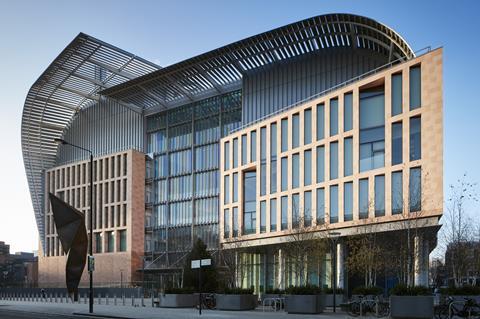
Thought also need to be given to logistics such as the transport of goods in and out. ‘[You need] to be conscious of the types of trucks that will be coming in and out of the space, and what the roads or streets around your space might look like,’ says Harney. Plus, she adds, the freight elevator needs to be located away from the passenger elevator ‘so someone with chemicals isn’t crossing paths with somebody that’s walking with their coffee’.
Arup, a development company with a focus on sustainability, has also been involved in several office-to-lab conversions. Tim Fry, who leads Arup’s science business in the UK, India, Middle East and Africa, says that with office to lab conversion, ‘you’re try to unpick some of the things that weren’t really considered when the original building was made’.
One major difference between a lab and an office, he says, is ventilation. ‘A normal office will have two air changes [per hour] on average for general ventilation. As soon as we put a lab into that space, we want at least six …and when you start putting fume cupboards in, you start creeping up to eight or 12 air changes – the existing ventilation system is [often] not big enough to do that.’
As a result, most buildings will need additional air handling systems, which may involve planning applications if they significantly change the façade of the building.
Along with the requirement for more air comes the need for more energy. ‘A lot of labs want emergency power – they want standby generation, because fridges, freezers or even fume cupboards or any critical devices need emergency power,’ says Fry. ‘Most office buildings only have small generators for life safety support.’
The draw of urban working
Not all urban labs are conversions, however. Increasing numbers of bespoke lab spaces are being built from scratch as part of planned redevelopments. At Arup, Fry helped develop the Francis Crick Institute in central London. Purpose-built to house lab space, the main chemistry lab has 40 fume cupboards with an additional 14 in the new Skylab – a new laboratory space built on the roof, which opened in 2024.
The Crick forms a part of the ever-growing Knowledge Quarter in London, located around King’s Cross, Euston Road and Bloomsbury, which aims to open doors for visitors, students, researchers and people who live and work in this part of London.
The trend towards urban labs reflects the growing desire for people to live, work and play in the same area. Seeing this, companies are recognising they need to follow suit to continue attracting and retaining the most talented people.
‘[Lots of] universities are [already] within the city centres, so it’s nice, if you’re already spinning out of a university, that you’re not having to go that much further,’ says Harney. ‘A lot of the people are a bit younger too so then it’s a little bit easier for them to be in the city too.
‘You could easily walk to a nice restaurant or just go out with your friends after work – there’s just so much more to do, rather than being in a research park, way out in the suburbs,’ she adds.
Many of the organisations looking for city lab space are early-stage companies that might have venture capital funding, says Fry. ‘They’re beyond the startup, they’re in the growth mode, they’ve maybe got a proof of concept, and they’re just growing now that they’re getting a bit more funding, then they’ve got that confidence to get the slightly larger space.’
Taking matter into your own hands
When Harry Destecroix set up the ScienceCreates deep tech incubator in Bristol city centre, he was trying to find a solution to his own lab space problem. But, in doing so, he has helped countless other companies. On deciding to spin out his first company, Ziylo, with his professor in 2014, he says they ‘hit a brick wall’ trying to find the lab space they needed. Therein came the idea for ScienceCreates.
‘We really needed an incubator for our own company, and we just felt that other people would too. We couldn’t afford … to rent a small commercial unit and build our own lab, so we thought, hang on a minute, why not set up another company and build lab space, and then we’ll be an anchor tenant and we’ll rent out to other companies,’ he explains. ‘I think it’s one of the first examples of a startup building an incubator for their own startup.’
I’ve met a lot of people that have great ideas, and all of those ideas go nowhere because there is no lab to get started
ScienceCreates works on the basis of flexible, short-term lettings structured around the way pre-revenue startups are financed; typically 18–24 months. Destecroix explains they were keen to be in the city centre because, in the early stages of a company, ‘community is key’.
‘We wanted to be close to the university so that there was lower friction to potentially doing a spin out or a startup. Also … companies need to raise financing – they have to find investors, so being in the city is key to having that interaction. Also, you need to attract people to work for you, and you’re close to the R&D where you spun out from.’
They created the space by retrofitting warehouse space and building modular labs that could do everything, from chemistry and semiconductor physics to biology. In 2021 they expanded to a second space and are now starting construction of a third site that will take their total footprint to 75,000ft2.
Destecroix says that the number of spinouts in Bristol has significantly increased since they started – with Bristol going from the 20th to 6th highest producer of spinout companies in the UK.
The Ryanair of labspace
Victoria Garcia, founder of QuickLabs, also came up with her own approach to labspace while launching her first business BindEthics – which makes an adhesive derived from bio-waste – when she too struggled to find lab space.
‘I’ve met a lot of people that have great ideas, from people that are just finishing their PhD, or people that have been working for ages, and all of those ideas go nowhere because they just don’t see themselves being capable of developing if there is no lab to get started, it’s that simple,’ she says.
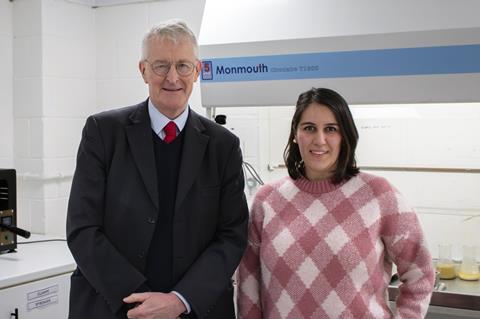
Garcia found that renting empty lab space was hugely expensive – in the region of £5000 a month. She considered how, at universities, groups can share lab space and equipment without any issues and wondered why nobody had thought to commercialise that model.
Garcia located a warehouse in the heart of Leeds, which she has turned into office space with an adjoining lab that can comfortably fit up to 15 scientists working alongside each other. To help equip the lab she started a donation campaign whereby big companies and universities could give her their unwanted, but fully-functioning, equipment, from glassware to labcoats. She then developed the QuickLabs concept of cheap, short-term lab rentals.
‘My packages start at 10 days. You pay £90 per day up front, but you have three months to use them. ‘The contract is just a rental agreement, she says, but tenants also have non-disclosure and intellectual property agreements to protect themselves and anyone they end up sharing the lab with.
As the name suggests, key to QuickLabs is the speed. Once someone has been to see the lab and checked it has everything they need, Garcia will get them in and working; no waiting around for months while someone else potentially develops your idea somewhere else.
We need speed, low cost and flexibility – both for scale-up and early-stage incubation
She initially set up the lab with early-stage, deep tech startups and freelance scientists in mind, thinking the model would be useful for them to investigate their ideas before committing to a more permanent space.
However, she has also had big pharmaceutical companies and schools contacting her. ‘One of the people that approached me is somebody who has autism. He’s in year 13, and he can’t do the practicals in the school environment, so they needed him [to be able to do them] somewhere else.’
Garcia eventually wants to have QuickLab in cities across in the UK – ‘this is like the Ryanair of labspace’, she says.
Maintaining momentum
In September 2024, the Royal Society of Chemistry (RSC) called on the UK government to engage with the deep tech chemistry sector to help drive investment and address the ongoing lack to suitable facilities. At the same time, it launched the More ChemLabs initiative, aiming to support creation of chemistry labs that work; by innovating to create labs that are fit for purpose.
Kate Carlisle, ecosystem challenges portfolio manager at the RSC who is closely involved in the More ChemLabs initiative says it is ‘great’ to see more chemistry labs in city centres close to universities.
‘It’s a huge advantage for chemistry startups to be part of a cluster with close proximity to collaborators and access to cutting edge equipment, expertise and a strong talent pipeline – solving many of the critical hurdles we know chemistry startups face in their early stages,’ she says.
This boom in urban lab space is hugely positive for chemistry. However, the lab space problem is far from solved. Destecroix has experienced great success with ScienceCreates, but he says that entrepreneurial activities have accelerated faster than the physical space to house them. ‘We really need to do two things,’ he says. ‘We have to build more and we have to get the cost per square foot down.’
He says he is working with the UK government on scale-up and the lab space problem – ‘we need speed and we need low cost and we need flexibility – and that’s both for scale-up and early-stage incubation.’
Additional information
Find out more about the RSC’s MoreChemLabs initiative, as well as the Change Makers programme that supports deep tech chemistry companies




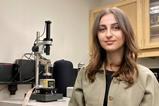
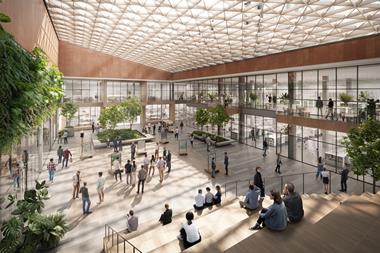

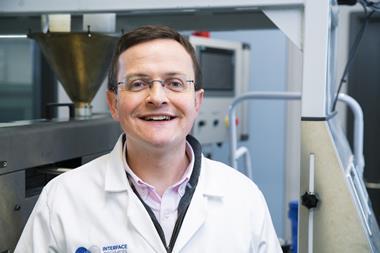
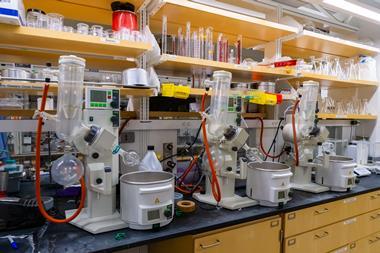








No comments yet